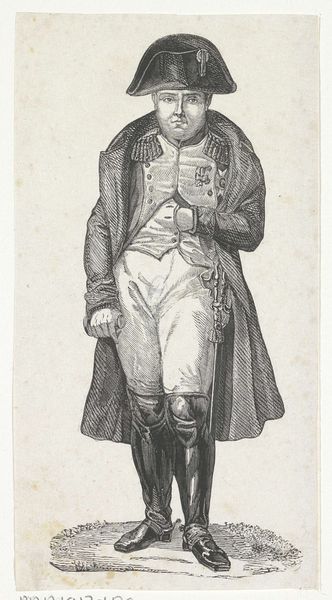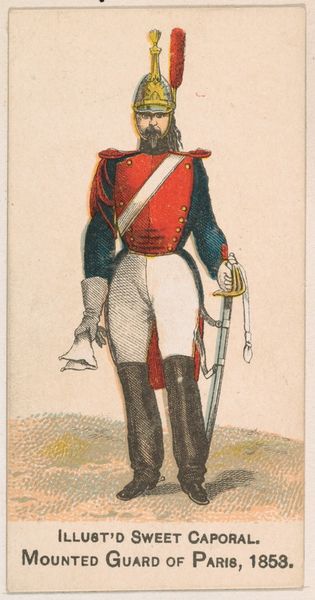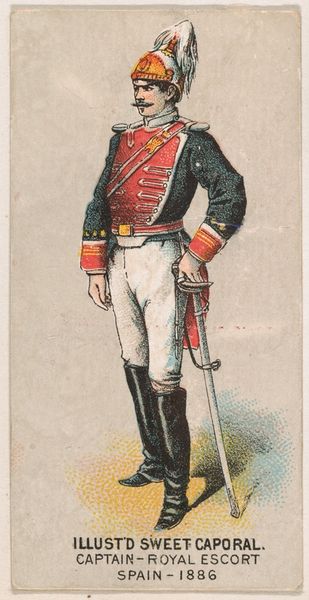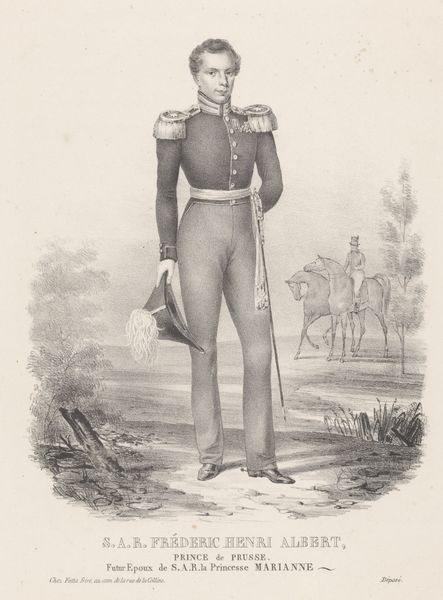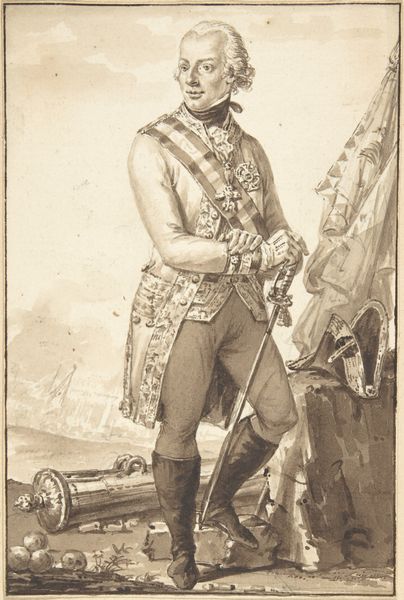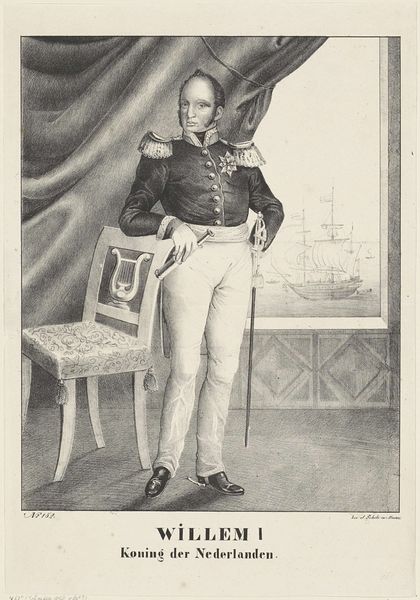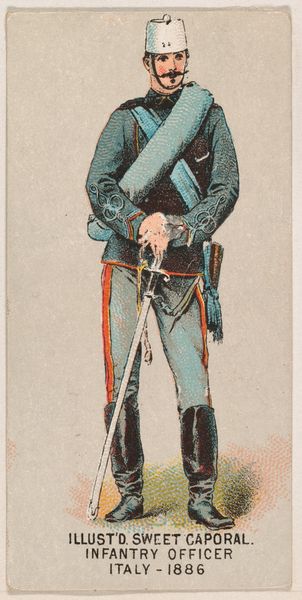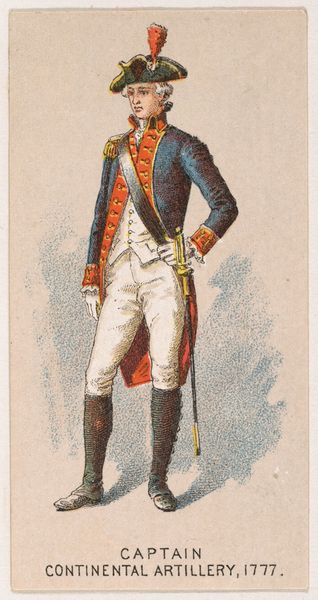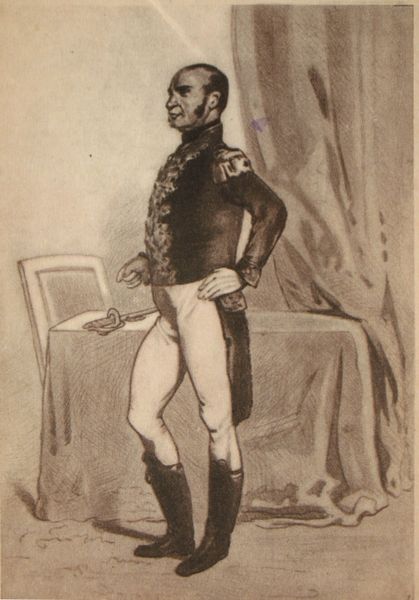
Portret van Willem I Frederik, koning der Nederlanden c. 1815 - 1829
0:00
0:00
claudiolinati
Rijksmuseum
drawing, print, graphite
#
portrait
#
drawing
#
neoclacissism
#
16_19th-century
# print
#
charcoal drawing
#
pencil drawing
#
19th century
#
graphite
#
graphite
#
realism
Dimensions: height 246 mm, width 185 mm
Copyright: Rijks Museum: Open Domain
Curator: Claudio Linati created this "Portret van Willem I Frederik, koning der Nederlanden," King William I, sometime between 1815 and 1829. It’s rendered with graphite and charcoal on paper, a fascinating example of early 19th-century portraiture now held at the Rijksmuseum. Editor: Right away, I'm struck by a curious tension. He's so stiffly formal, but the medium itself, charcoal and graphite, feels immediate, intimate, almost like a fleeting impression rather than an official depiction. He has got attitude. Curator: I agree. The lithographic process facilitated the mass production of such images, distributing the image of the monarch and reinforcing his authority throughout the newly formed Kingdom of the Netherlands. Think about the paper itself, its availability, and the societal drive to disseminate royal likenesses through relatively affordable prints. Editor: Makes you wonder about the relationship between artist and sitter too, doesn’t it? Was there pressure to conform to a certain idealized image, or did Linati have room to explore character? Look at those eyes! There’s a glint of something... almost mischief? Or maybe it's indigestion, it’s hard to tell after a 200 years or so. Curator: The pose, while somewhat standard for regal portraiture of the time, is interesting. The materials would have been relatively easy to acquire. It speaks volumes about accessibility versus aspiration in artistic representation, don’t you think? Graphite and charcoal allowed for broader participation in image-making and consumption, which, although less opulent than oil painting for instance, served practical functions related to identity and representation. Editor: Exactly! It also hints at this king's... let's say 'frugal' approach to things? I find the rendering of the fabrics particularly evocative. The weight of his jacket is rendered expertly through delicate tonal variations with, ostensibly, everyday material. Curator: Examining the piece through the lens of its materials and means of production definitely gives us insight into how it might have circulated within 19th-century Dutch society. Editor: Ultimately, though, it remains this intriguing little dance between power, personality, and process... Curator: Indeed. It all converges beautifully within the frame to make the portrait what it is. Editor: Agreed. Now, if you’ll excuse me, I suddenly have an uncontrollable urge to buy charcoal… and possibly a crown.
Comments
No comments
Be the first to comment and join the conversation on the ultimate creative platform.
